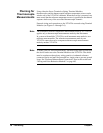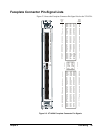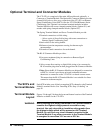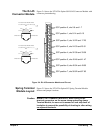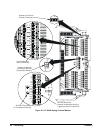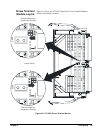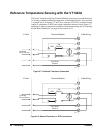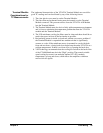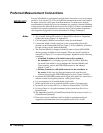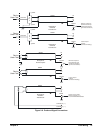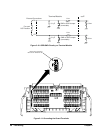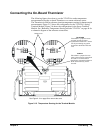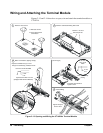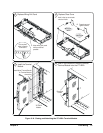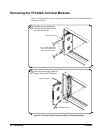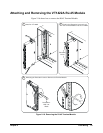
46 Field Wiring Chapter 2
Preferred Measurement Connections
For any A/D Module to scan channels at high speeds, it must use a very short sample
period (< 10
μ
s for the VT1422A). If significant normal mode noise is presented to
its inputs, that noise will be part of the measurement. To make quiet, accurate
measurements in electrically noisy environments, use properly connected shielded
wiring between the A/D and the device under test. Figure 2-9 shows recommended
connections for powered transducers, thermocouples, and resistance transducers.
(See Appendix E page 483 for more information on Wiring Techniques.)
Notes 1. Try to install Analog SCPs relative to Digital I/O as shown in "Separating
Digital and Analog Signals" in Appendix E.
2. Use individually shielded, twisted-pair wiring for each channel.
3. Connect the shield of each wiring pair to the corresponding Guard (G)
terminal on the Terminal Module (see Figure 2-10 for schematic of Guard to
Ground circuitry on the Terminal Module).
4. The Terminal Module is shipped with the Ground-to-Guard (GND-GRD)
shorting jumper installed for each channel. These may be left installed or
removed (see Figure 2-11 to remove the jumper), dependent on the following
conditions:
a. Grounded Transducer with shield connected to ground at
the transducer: Low frequency ground loops (dc and/or 50/60 Hz)
can result if the shield is also grounded at the Terminal Module end.
To prevent this, remove the GND-GRD jumper for that channel
(Figure 2-9 A/C).
b. Floating Transducer with shield connected to the transducer at
the source: In this case, the best performance will most likely be
achieved by leaving the GND-GRD jumper in place (Figure 2-9 B/D).
5. In general, the GND-GRD jumper can be left in place unless it is necessary to
remove to break low frequency (below 1 kHz) ground loops.
6. Use good quality foil or braided shield signal cable.
7. Route signal leads as far as possible from the sources of greatest noise.
8. In general, don't connect Hi or Lo to Guard or Ground at the VT1422A.
9. It is best if there is a dc path somewhere in the system from Hi or Lo to
Guard/Ground.
10.The impedance from Hi to Guard/Ground should be the same as from Lo to
Guard/Ground (balanced).
11.Since each system is different, don't be afraid to experiment using the
suggestions presented here until an acceptable noise level is found.
IMPORTANT!



